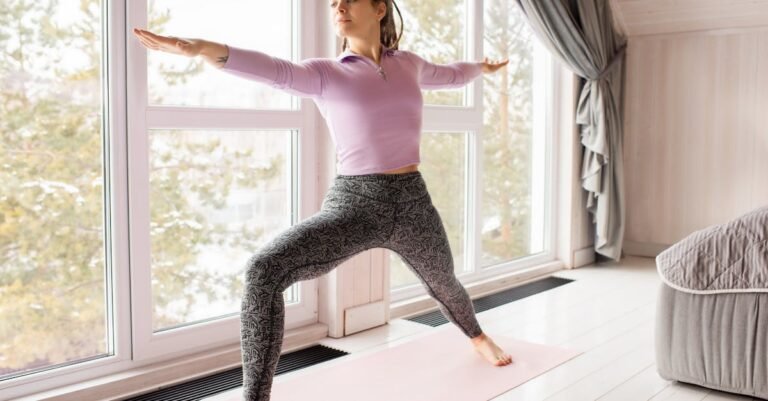So, you wanna start working out, but the gym feels kinda scary, or maybe just… far away? Totally get it. Trying to figure out exercises you can actually do in your living room, without tripping over the coffee table or needing a bunch of weird equipment, can feel like trying to solve a puzzle. You might be thinking, “Where do I even begin?” or “Am I going to hurt myself?” Well, you’re in the right place! This article is gonna break down some super simple, totally doable home workout routines perfect for anyone just starting out. We’ll walk you through getting set up, the best basic moves, and how to put it all together safely. Stick with us, and you’ll have a solid plan to get moving and feel good, right from home.
Why Kick Things Off at Home?
Starting your fitness journey at home is actually pretty awesome for a bunch of reasons. First off, it’s your space! No worrying about other people watching you or feeling like you don’t know how to use fancy machines. You can wear whatever you want (hello, old t-shirt and pajama bottoms!), play your own music as loud as you like, and go at your own speed. Plus, think about the time you save not commuting to a gym. That’s extra time for your workout or, let’s be real, maybe hitting snooze one more time. It’s also way easier on the wallet – no membership fees here! Home workouts remove a lot of the common excuses that stop people before they even start.
Gearing Up (Spoiler: You Don’t Need Much!)
Okay, let’s talk gear. You might picture needing dumbbells, resistance bands, yoga balls… Nope! Especially not when you’re just starting. Honestly, the most important thing is just a little bit of clear floor space. Enough room so you don’t knock over a lamp doing arm circles, you know? Wear comfy clothes that let you move freely and maybe grab a water bottle. A yoga mat can be nice for floor exercises, making things a bit softer, but a rug or carpet works fine too. The main takeaway? You are the most important piece of equipment. Your body weight is going to provide plenty of challenge to begin with.
Super Important: The Warm-Up!
Think of warming up like waking your body up gently before asking it to do work. Jumping straight into exercises without it is like trying to stretch a cold rubber band – ouch! A good warm-up gets your blood flowing to your muscles, making them more flexible and ready for action. This helps prevent injuries and makes the actual workout feel a bit easier. We’re not talking anything crazy here. Spend about 5 minutes doing things like:
- Arm circles (forward and backward)
- Leg swings (like kicking, but controlled, holding onto a wall if needed)
- Torso twists (gentle side-to-side turning)
- Marching in place with high knees
It’s just about getting things moving and slightly raising your heart rate.
Your Starting Moves: Bodyweight Champions
Alright, let’s get to the actual exercises. Bodyweight moves are fantastic because they use your own weight as resistance. They teach you proper form, which is super important for avoiding injuries later on. Here are a few great ones to start with:
- Squats: Imagine you’re about to sit down in a chair, but then you stand back up just before your butt touches it. Keep your chest up and back straight. Too tricky? Actually sit down in a chair and stand back up, focusing on control.
- Push-Ups (Beginner Style!): Forget the floor for now if needed. Start by doing push-ups against a wall – the further your feet are from the wall, the harder it is. Or, try them on your knees on the floor. Keep your body in a straight line from head to knees (or feet).
- Lunges: Take a step forward with one leg and lower your hips until both knees are bent at about a 90-degree angle. Make sure your front knee stays behind your toes. Push back to the starting position. Alternate legs. Need support? Keep a hand on a wall or chair.
- Plank: Hold yourself up on your forearms and toes (or knees for an easier version), keeping your body in a straight line from head to heels (or knees). Think of making your body like a sturdy wooden plank! Try holding for 15-30 seconds to start.
Focus on doing each move slowly and correctly rather than rushing through lots of sloppy ones.
Putting It All Together: Your First Routine
Okay, you know the moves, now how do you make it a workout? Keep it simple! Pick 3 or 4 exercises and aim to do them in a circuit. That means doing one set of an exercise, then moving to the next, and so on. Once you’ve done one set of each, that’s one round. Rest for a minute or two, then try for a second round.
Here’s a sample beginner routine:
- Squats: 8-10 repetitions (reps)
- Wall or Knee Push-Ups: 6-8 reps
- Alternating Lunges: 5-6 reps per leg
- Plank: Hold for 15-30 seconds
Do this circuit 2 times through, with that 1-2 minute rest in between. Remember Sarah, who we imagined earlier? This is exactly the kind of simple start that worked for her fictional fitness journey. It wasn’t about being perfect; it was about showing up and doing *something*. Do this routine maybe 2-3 times a week on non-consecutive days (like Monday, Wednesday, Friday) to give your body time to recover.
Don’t Forget to Cool Down
Just like warming up is important, cooling down helps your body transition back to its resting state. It can help reduce muscle soreness later on (though some soreness when you start is totally normal!). A cool-down involves gentle stretching. Unlike the moving stretches in the warm-up, these are static stretches, meaning you hold them still for about 20-30 seconds. Focus on the muscles you just worked.
Some easy cool-down stretches:
- Quad Stretch: Stand, hold onto a wall, grab your ankle and gently pull your heel towards your butt.
- Hamstring Stretch: Sit on the floor, legs straight out, gently reach towards your toes (don’t force it!).
- Chest Stretch: Stand in a doorway, place your forearms on the frame, and lean forward gently.
Just 5 minutes of this makes a difference!
Listen Up! (To Your Body, That Is) & Keep Going
This might be the most important part. Starting a workout routine isn’t about pushing yourself until you puke or can’t move the next day. It’s about building a healthy habit. Pay attention to how you feel. A little muscle soreness is okay, sharp pain is not. If something hurts, stop doing it. Rest days are crucial – they’re when your muscles actually repair and get stronger. Don’t feel like you failed if you miss a day; just get back to it next time. Consistency beats intensity every time when you’re starting out. Think of it like learning an instrument – you don’t become a rockstar overnight; you practice regularly, little by little.
So, there you have it! Starting a home workout routine doesn’t need to be complicated or cost a fortune. It really boils down to finding some space, warming up properly, focusing on a few key bodyweight exercises like squats, push-ups, and lunges, and remembering to cool down afterwards. The biggest hurdle is often just getting started, but by keeping things simple and listening to your body, you can build a routine that works for you. Remember our fictional friend Sarah? Taking that first small step was her key. Consistency is your best friend here. You don’t need perfection, just persistence. You’ve got the tools now – go give it a try and see how good getting moving at home can feel!










